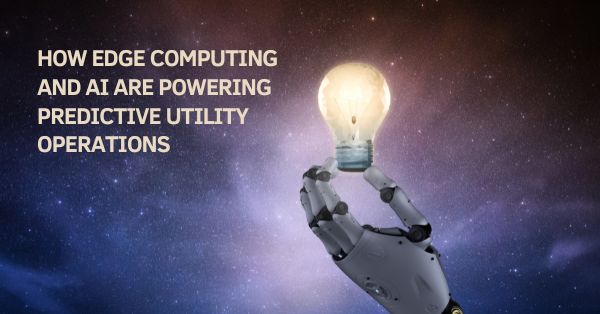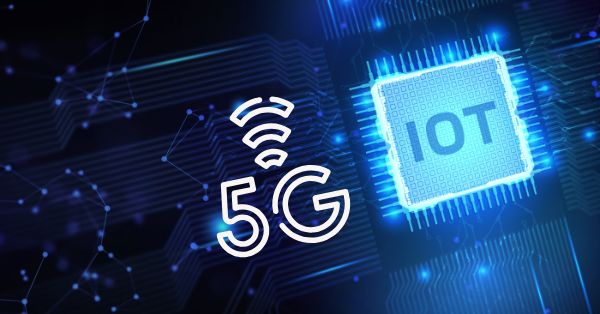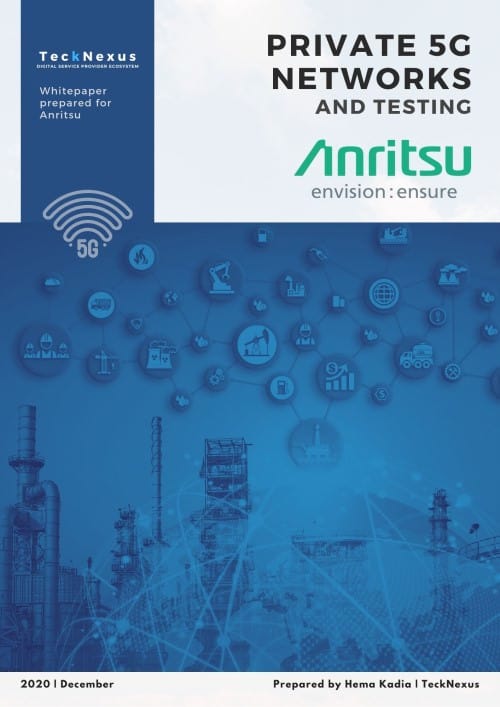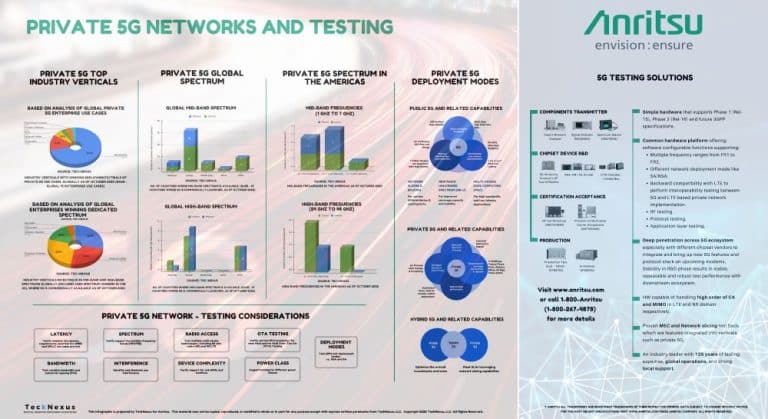As utilities accelerate digital transformation, they are collecting massive volumes of operational data from substations, sensors, smart meters, and industrial equipment. However, collecting data is not enough. The next wave of utility innovation lies in processing, analyzing, and acting on that data in real time. This is where edge computing and artificial intelligence (AI) intersect with private networks to drive smarter, safer, and more autonomous utility operations.
In this fifth installment of the Connected Utilities series, we explore how utilities are integrating edge computing and AI with private LTE and 5G networks to unlock predictive maintenance, grid automation, and near real-time situational awareness.
Edge Computing: Bringing Intelligence Closer to the Source
Edge computing refers to the deployment of data processing and analytics capabilities at or near the source of data generation. In the utility context, this often means placing edge nodes or micro data centers at substations, DER sites, or within control systems. These nodes enable local processing of high-volume or latency-sensitive data, eliminating the delays and bandwidth burdens associated with backhauling everything to a central cloud.
For example, when a transformer begins to overheat or a vibration anomaly is detected on a turbine, edge systems can run machine learning models locally to determine the severity of the event. They can then trigger alerts, shut down systems, or dispatch maintenance—all in milliseconds. This speed and autonomy are essential for grid stability, worker safety, and asset protection.
Moreover, edge computing allows for localized compliance with data residency laws, which is especially important in regions with strict data sovereignty regulations. It also reduces reliance on central infrastructure, improving resilience in the face of connectivity disruptions or cyber incidents. In large-scale utility operations, deploying edge infrastructure reduces network strain, especially during peak demand events, and allows site-specific optimization without constant dependency on a centralized decision engine.
Edge computing also provides a pathway to harmonize distributed energy resource (DER) integration. With energy production becoming more localized and intermittent—such as from solar arrays or wind farms—utilities need intelligence at the edge to balance loads, stabilize voltage, and manage bi-directional power flows in real time. Without edge systems capable of independently processing this data, the burden on central systems becomes unsustainable.
How Private LTE and 5G Enable Intelligent Utility Edge Architecture
Edge infrastructure needs a robust communication backbone to ingest data from field devices and deliver insights to operational teams. Private LTE and 5G networks provide that backbone. With ultra-reliable low-latency communication (URLLC), support for massive machine-type communications (mMTC), and deterministic performance, private networks ensure that data flows seamlessly between sensors, edge devices, and control centers.
These private networks are purpose-built to handle the unique conditions of utility environments—from underground pump stations to mountaintop wind farms. Unlike public cellular, private networks can be tailored to specific performance and coverage requirements, which is critical when managing geographically dispersed assets. Additionally, private networks enhance cyber defense by offering segmented traffic flows, dedicated spectrum, and policy-based routing, all of which contribute to a hardened security posture.
In addition, private networks allow utilities to segment traffic by priority, ensuring that critical control signals, such as teleprotection commands or FLISR triggers, are delivered instantly, while background data, like periodic sensor reading,s are scheduled efficiently. The integration of edge and private network capabilities lays the foundation for real-time responsiveness and closed-loop automation. This dynamic interlinking of compute and connectivity also supports continuous learning systems, where data collected from edge locations inform future AI model updates.
Private networks also enhance redundancy and disaster preparedness. In emergency scenarios where public networks may degrade or fail, private networks maintain secure, reliable communication with field devices and edge nodes. This resilience is crucial for utilities operating in disaster-prone areas or serving critical infrastructure.
Using AI and Machine Learning for Predictive Utility Operations
Artificial intelligence is enabling utilities to move from reactive to predictive operations. AI models trained on historical and real-time data can forecast asset failures, optimize energy dispatch, detect cybersecurity threats, and even recommend crew deployment strategies. When these models are deployed at the edge, they can operate independently of centralized data centers, increasing resiliency and response speed.
Use cases include predictive maintenance for substations, transformers, and switchgear; real-time power quality analysis; anomaly detection in load curves; and automated identification of vegetation encroachment from drone footage. In each case, AI-driven insights at the edge reduce downtime, lower maintenance costs, and improve grid reliability.
Edge-deployed AI models also allow for contextual decision-making that considers local operational patterns and asset histories. For example, a line sensor detecting intermittent harmonic distortion may apply localized learning to assess whether this reflects an abnormal load condition, a developing fault, or simply seasonal variance. The ability to infer, act, and learn at the edge represents a significant evolution from static threshold-based alerts to intelligent diagnostics.
| AI Use Case | Benefit | Example Scenario |
|---|---|---|
| Predictive Maintenance | Prevent asset failures before they occur | Transformer vibration analysis at the edge |
| Load Forecasting | Optimize energy distribution and demand planning | Real-time load curve monitoring |
| Fault Detection and Response | Automate identification and isolation of faults | Edge AI detecting substation breaker anomalies |
| Vegetation Management | Prevent outages and fires | Drone footage analyzed by AI for encroachment |
| DER Optimization | Balance intermittent renewables with local loads | Real-time solar panel voltage regulation via edge AI |
Predictive Maintenance at the Edge: A High-Impact Utility Use Case
One of the most promising edge-AI use cases is predictive maintenance. By continuously monitoring electrical parameters, temperature, vibration, and acoustic signatures, edge devices can detect early signs of equipment degradation. AI algorithms evaluate this data to calculate risk scores or remaining useful life (RUL), triggering maintenance before catastrophic failures occur.
For instance, an edge gateway at a substation might monitor multiple circuit breakers and detect a deviation in breaker operation time. This anomaly, when correlated with past maintenance logs and manufacturer specs, could indicate an impending mechanical failure. Without edge AI, such insights might be delayed or missed entirely due to limited central processing bandwidth or data transmission constraints.
Predictive maintenance not only reduces downtime and emergency repairs but also helps utilities optimize spare parts inventory and personnel scheduling. This leads to significant cost savings, increased asset longevity, and improved service reliability for end customers. Over time, these insights feed into asset investment planning and regulatory reporting, further embedding data-driven maintenance into utility operations.
Edge-AI systems can also support condition-based maintenance (CBM) strategies, where maintenance is triggered by actual equipment health indicators rather than arbitrary time intervals. This shift allows utilities to extend asset life, minimize maintenance overhead, and align operational efforts with asset performance data.
Key Benefits of Integrating Edge AI and Private Networks in Utilities
The convergence of edge computing, AI, and private networks offers numerous advantages for utility operations:
- Faster decision-making: Real-time data analysis at the edge supports immediate action.
- Lower bandwidth costs: Local processing reduces the need to transmit large datasets to central servers.
- Enhanced resiliency: Operations continue even if the connection to the core cloud is interrupted.
- Operational efficiency: AI automates routine tasks, improves diagnostics, and supports resource optimization.
- Improved compliance: Local data processing can aid in satisfying regulatory requirements around latency and data sovereignty.
- Scalability: AI models can be deployed and updated at scale, enabling adaptive learning from diverse conditions across the grid.
- Energy optimization: Edge-AI can help optimize energy flow and reduce losses in generation, transmission, and distribution.
- Cybersecurity monitoring: AI models detect anomalous network traffic patterns, flagging potential breaches in real time.
Together, these benefits help utilities modernize more cost-effectively while managing increasing data volumes and complex grid conditions. The ability to detect anomalies, make autonomous decisions, and orchestrate responses locally supports the shift toward decentralized, adaptive energy systems.
Building the Autonomous Grid with Edge AI and Private Networks
Edge computing and AI are not standalone innovations—they are part of a broader digital ecosystem built on private networks. By placing intelligence closer to the field and automating critical processes, utilities can reduce outages, extend asset life, and respond faster to emerging conditions.
As the energy landscape becomes more decentralized and dynamic, the combination of edge intelligence, AI, and private LTE/5G provides a critical foundation for the autonomous grid. In the next blog in the Connected Utilities series, we will explore governance, orchestration, and lifecycle management strategies for scaling private networks across utility enterprises.
Explore More from the Connected Utilities Series
Continue your learning journey with our full Connected Utilities blog series:
- Why Utilities Are Investing in Private Networks to Power the Digital Grid
- Strategic Use Cases for Private Networks in the Utility Sector
- Trends Accelerating Private Network Adoption in the Utility Sector
- Deployment Architectures and Spectrum Strategies for Utility Private Networks
- Edge Computing and AI for Predictive Utility Operations
- Governance and Lifecycle Management of Utility Private Networks
- Partner Ecosystems for Scaling Utility Private Networks
- Sustainability and ESG Drivers for Private Networks
- Monetization and Shared Use Models for Utility Private Networks
- Cybersecurity and Zero Trust for Utility Private Networks
- Future Roadmap – 5G Advanced and the AI-Driven Grid
Strengthen Your Utility Private Network Strategy
Assess your grid’s 5G readiness with our industry-specific tool, uncover gaps, and get clear, executive-ready insights to plan and deploy with confidence. Check Readiness & Premium Plans



























